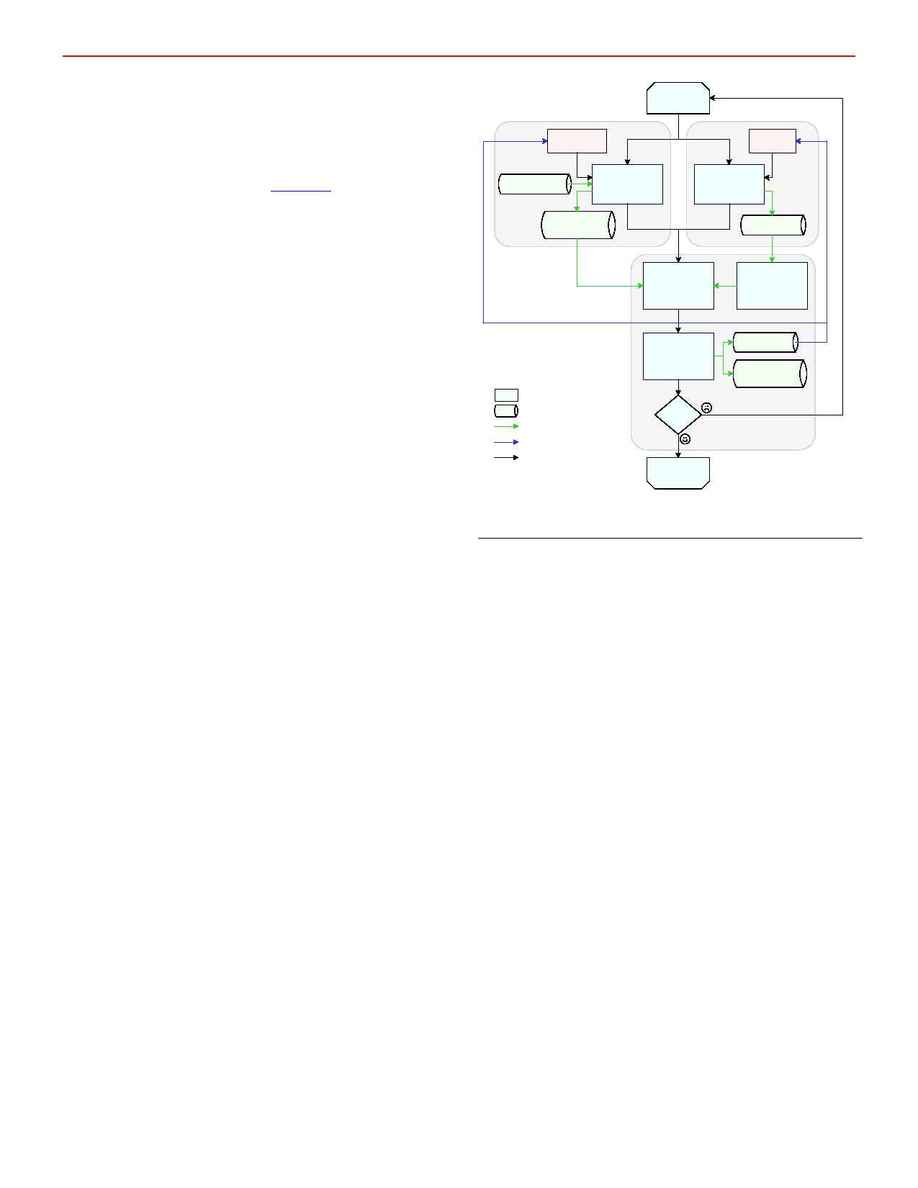
5. TOP-LEVEL STRUCTURE
The top level process structure of Newcomb is shown in
Figure 3. Basic operation is as follows.
The observations module is responsible for reading input as-
trometric observations and "massaging" them as necessary.
Massaging operations are listed in
Chapter 2
. The observations
will be of various types (Figure 5), taken at various observing
locations (Figure 4), including spacecraft.
The integration module is responsible for numerically inte-
grating a sophisticated dynamical model of the solar system --
including general relativistic terms, a detailed Earth-Moon sys-
tem, planetary spin vectors including precession and nutation,
and an unlimited number of asteroids -- to produce an ephem-
eris.
The model ephemeris is then compared with the observa-
tions in the O-C section of the parameter adjustment module to
produce a set of residuals. The parameter estimator uses the
partial derivatives of the model equations with respect to the
model parameters (including initial conditions) to solve the as-
sociated nonlinear least squares problem for the most probable
set of model parameter values that minimizes the O-C residu-
als.
The adjusted model parameters are then fed back into both
the ephemeris generator and the observation transformation
methods. The data are rereduced as necessary, and a new
ephemeris is generated by the integration module, using the
updated parameter values. These are again combined to pro-
duce a new set of residuals. This process is iterated until the
residuals satisfy predetermined success criteria.
At the end of the iterative process, we will have produced an
ephemeris that best fits the observations, given the model used,
as well as the best-fit model parameters, formal error estimates
of those parameters, and the parameter cross correlations. The
parameter error estimates and parameter correlations are de-
rived from the partial derivatives and the correlation matrix
from the least squares analysis. Experience with PEP has
shown that, normally, at most only a couple or a few iterations
are needed.
C
HAPTER
1: P
ROJECT
O
UTLINE
5
Figure 3 -- Major program processes.
iteration
loop start
massage
observations
integrate eqs.
of motion
form O-C
residuals
parameter
estimator
O-C
eval
iteration
loop end
observations
reduced
observations
ephemeris
parameters
correlation
matrix
observations module
parameter
adjustment
module
integration module
physical
model
observation
models
data
data flow
process
parameter feedback
process flow
calculate
positions
